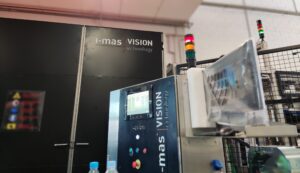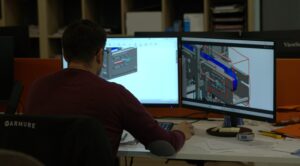Over the last decade and a half, there has been a notable metamorphosis in the business strategy of corporate organizations and consumer brands. Instead of focusing on themselves, they have mutated their approach to the user, putting them at the epicenter of the equation and privileging their interest and experience as the main element. In other words, the user has ceased to be a marginal or secondary element in the hierarchy of the business model, instead acquiring a starring role.
This more “humanized” approach has led to the extrapolation of this trend to most sectors and schools of thought, which entails implementing other models of communication and production in today’s society.
The influence of design on the user’s life
The influence of design in our lives is found in all areas, and it is capable of adapting and tuning into today’s needs and lifestyles. The user-centric approach was quickly acquired in the world of industrial design. This implies that industrial designers develop a deep empathy with the people for whom they are creating something new, thinking of solutions that genuinely enhance their lives. This requires guiding and understanding the needs and desires of users and creating solutions that effectively and efficiently meet those needs.
In recent years, user-centered design has emerged as a driving force in product innovation. Without understanding there is no experience. Therefore,designers are now studying and observing users to gain information about their needs and desires. This user research approach is used to gain a deeper understanding of the problem being addressed. By understanding their needs, designers can create solutions that meet them.
What are the characteristics that designs must have to ensure a good user experience?
- Useful: In any design process, it is essential to establish a clear premise and have the necessary certainty to determine if the products or systems we are developing are truly useful, to the extent that they are capable of solving problems or satisfying the desires of users. To achieve this, it is essential to apply our knowledge and experience effectively.
- Usable: La facilidad de uso es un aspecto crucial y sigue siendo fundamental cuando trabajamos con un nuevo modelo. While highly valued by new consumers, we must bear in mind that on its own, it is not enough. Other characteristics may also be important to make the product appealing and effective, such as quality, efficiency, and the ability to meet the specific needs of the user.
- Desirability: Desirability is a virtue that, although difficult to achieve, is not impossible. In some designs, luxury, power, and the ability to convey a specific image or identity are valued, giving them a very strong emotional character. However, to attain this goal, it’s paramount to factor in aspects like communication, which have a notable impact on how the user will perceive the product.
- Accessible: Accessibility is a crucial aspect in design, and just like modern architecture, our products and systems should be accessible to all individuals, including those with disabilities, who represent approximately 16% of the population. It’s important to note that accessibility is not just an ethical or moral issue but also a practical necessity, as excluding certain user groups can negatively impact the performance and perception of the product. Therefore, it is essential for designers to consider the needs of all individuals and strive to create products and systems that are easy to use and accessible for everyone.
- Valuable: It’s essential that our designs provide added value to users, enhancing their experience and increasing their satisfaction. To achieve this, we must consider the needs and expectations of users, as well as the challenges they face and the desires they seek to fulfill. We must create products and systems that provide effective solutions to user problems, offering benefits that go beyond mere functionality. For this, it’s crucial to have a deep understanding of the market, users, and current trends, and to work collaboratively and multidisciplinarily to achieve design goals. Value is a key element in effective design and should be a constant consideration at all times.
- Functional: Functionality is a fundamental aspect in the design of any product or system. It is necessary to place special emphasis on ensuring that the new product tangibly resolves or satisfies a need or problem of the user. This entails having a deep understanding of the needs and desires of the user, as well as the challenges and limitations they face. We should design products and systems that are effective and efficient in solving these problems, and that are easy to use and understand for users. Functionality must be a primary consideration in any design process, and we must work to create products that are useful and effective in solving user needs and problems.
- Intuitive: Whether it’s a product or a service, it’s crucial that it’s easy to use and can be understood effortlessly. Designers should strive to create solutions that are visually appealing while also being easy to use for the user. This involves considering factors such as usability, readability, accessibility, and interaction. There should be coherence between the interface and the functionality of the product, and information should be presented clearly and concisely for the user. Design should put the user at the center and create solutions that are intuitive and easy to use, which will result in greater user satisfaction and a better perception of the product or service. Ease of use and understanding are fundamental elements in effective design, and designers should work to create solutions that offer a satisfactory and enjoyable user experience.
- Iterative: Increasingly, the trend is to use an iterative approach in the design process. Designers create solutions, receive feedback from users, and then refine and improve those solutions. By receiving feedback from users and using an iterative approach, designers can identify and correct problems in the product before they become a bigger problem.
- Differential: By focusing on user needs, designers can create solutions that are unique and distinctive. This trend framework also helps businesses identify new opportunities for diversification. By creating innovative solutions, companies also differentiate themselves from the competition and increase their market share.
User-centered design is not only important in product development, but can also have an impact on a company’s profitability. By creating solutions that meet user needs, companies can increase customer satisfaction and improve customer loyalty. This, in turn, can increase the company’s revenue and profitability in the long term.
Ultimately, to achieve success in the design of a product or system, it is essential to take into account a variety of factors and consider the needs and expectations of users at all times.
If you want to learn about examples of user-centered designs and how we can assist you, click here.



